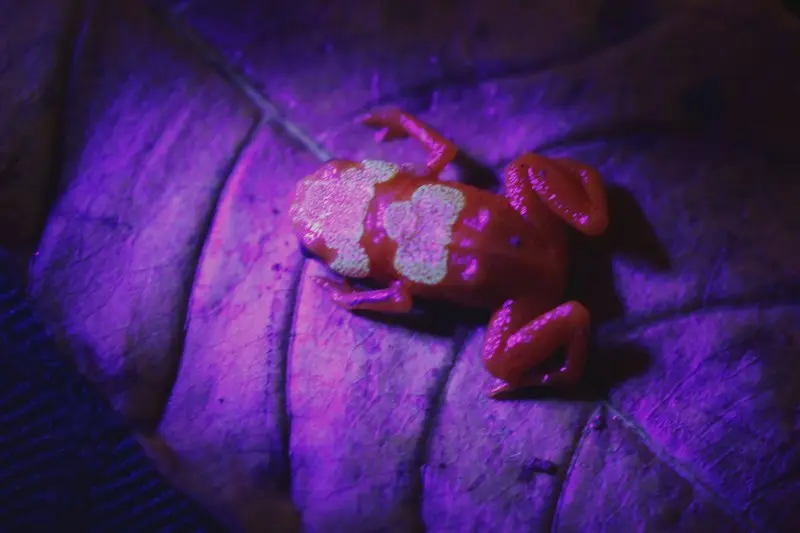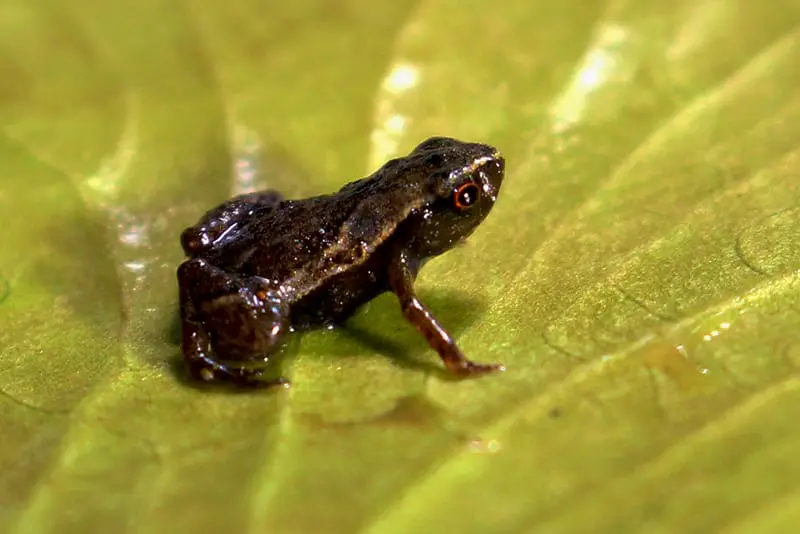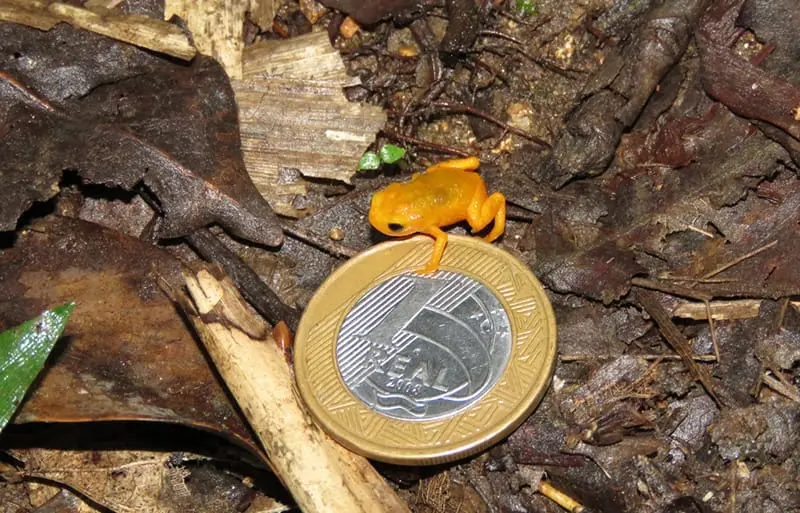Meet the little saddleback toads
It is common that when we think of frogs, the large, warty ones that many people would rather stay away from come to mind. However, there are more than 7,000 species with varying sizes, habits, and colors. All of these species are grouped into 55 families, one of which is the genus Brachycephalus — of which includes some of the smallest frogs in existence.
Second only to Paedophryne amauensis (the smallest frog in the world with only 7 millimeters (0.3 in) that lives in New Guinea) is Brachycephalus Didactylus, with only 1 cm (0.4 in). This species is popularly known as the Brazilian Gold Frog, as are other species in the genus that have yellow and orange colors. These colors are generally considered to be warning colors, warning potential predators that these frogs are dangerous if ingested. However, their toxicity has only been studied in a few species.
On the other hand, the brownish species of the genus are popularly called flea frogs. Regardless of color, all 36 species are considered equally small, less than 2 cm.
Fluorescence

Fluorescence has been seen in several marine animals and some birds, but is extremely rare in amphibians, especially frogs. The Brazilian gold frog of the species B. pitanga and the red pumpkin toadlet B. rotenbergae, (until 2019 confused with B. ephippium), have fluorescent bones that are visible through the thin skin of adult individuals when exposed to ultraviolet light.
It is believed that because these species cannot hear their own vocalizations, they have evolved fluorescent bones as a new way to attract mates. However, there are not enough species data to confirm this correlation, and the functions of fluorescence remain speculative.
Due to the miniaturization they underwent during their evolution, the bony composition of their hearing aids became underdeveloped. Their communication also seems to depend on certain movements: the inflation of the vocal sac during croaking, the opening of the mouth and the swinging of the arms. Although some species cannot hear their own call, they can hear sounds outside the frequency of their croaking.
They don’t jump

While frogs of other genera usually have 4 toes on the front legs and 5 on the back legs, these little frogs have only 2 functional toes on the front legs and 3 on the back legs, the rest being atrophied, almost non-existent.
Also, because some of the bones in their legs are not well developed, the Brazilian gold frogs and pumpkin toadlets cannot jump very far and prefer to walk on the ground in the dense and humid forests of the Atlantic Forest. Flea frogs, on the other hand, although physically similar, jump more easily.
Reproduction
From the few species where reproduction has been studied, it has been found that, unlike many frog species, females lay few eggs (about five or less) and hide them in the ground. When they hatch, they do not produce tadpoles, but even smaller toads.
Conservation

Almost all Brachycephalus species inhabit relatively small areas, discovered only in the 21st century. Of the 36 described species, only 11 had been recognized by the International Union for Conservation of Nature (IUCN) by 2010. This is due to the fact that they are very similar to each other, which caused taxonomic problems; that is, problems in distinguishing one species from another, as many were primarily separated by skin color and texture - characteristics that can vary from one individual to another.
However, in a revision made in 2019, all species recognized up to that time were included, using IUCN definitions and classifying their conservation statuses as follows: 10 species with data deficiency (not enough data to be measured), 5 classified as least concern, 10 as vulnerable, 5 endangered, and 6 critically endangered.
Two of the species classified as data deficient, have not been recorded since their original scientific descriptions, and are unknown in life. However, in 2020 one of these species was rediscovered, after 100 years without a sighting. B. bufonoides was found living (very well, thank you!) in the region of the Environmental Protection Area of Macaé de Cima, in Nova Friburgo-RJ.
Although some species with restricted range have well-protected areas in reserves, many do not and are in danger. Their small ranges make them highly vulnerable to habitat loss — due to climate change, forest fires, and deforestation for cattle ranching and agriculture.
Read more:
Evidence of auditory insensitivity to vocalization frequencies in two frogs
Intense bone fluorescence reveals hidden patterns in pumpkin toadlets
Breeding Behavior of the Pumpkin Toadlet, Brachycephalus ephippium (Brachycephalidae)
